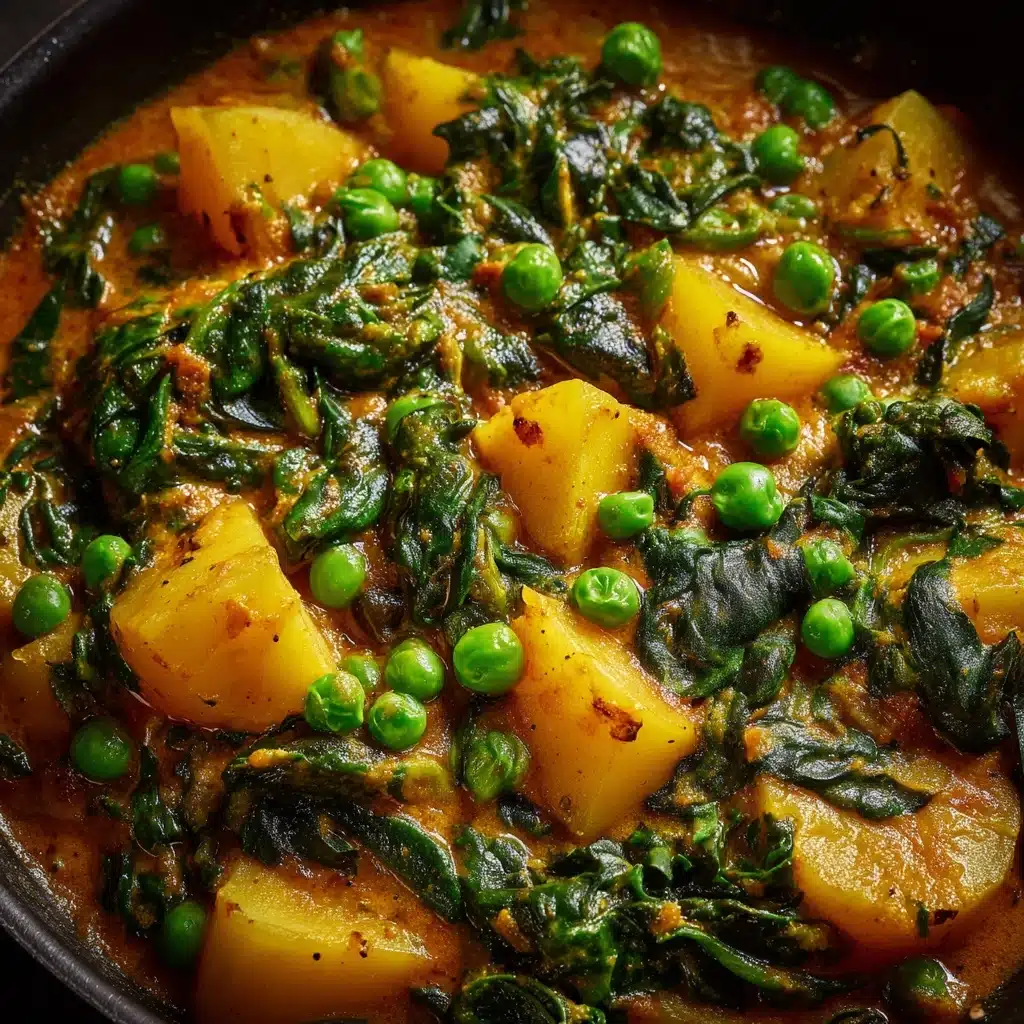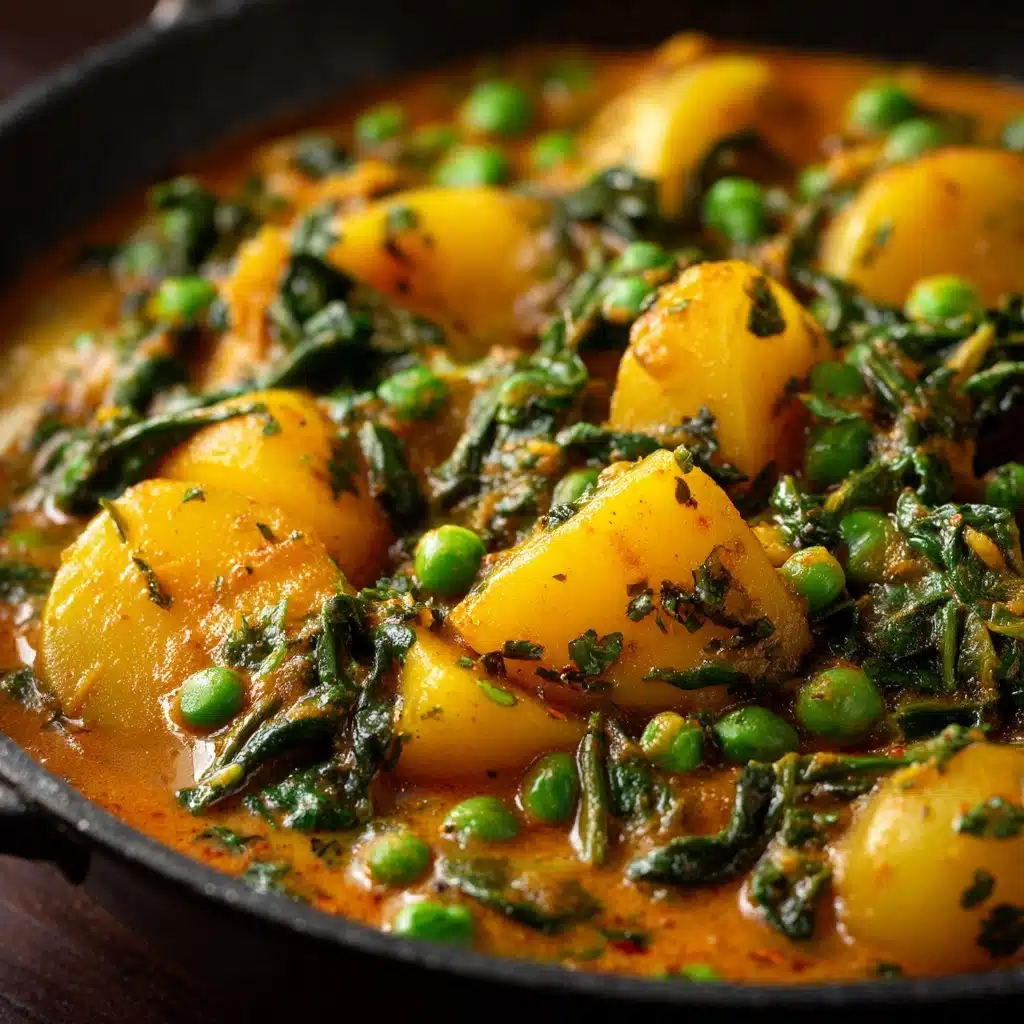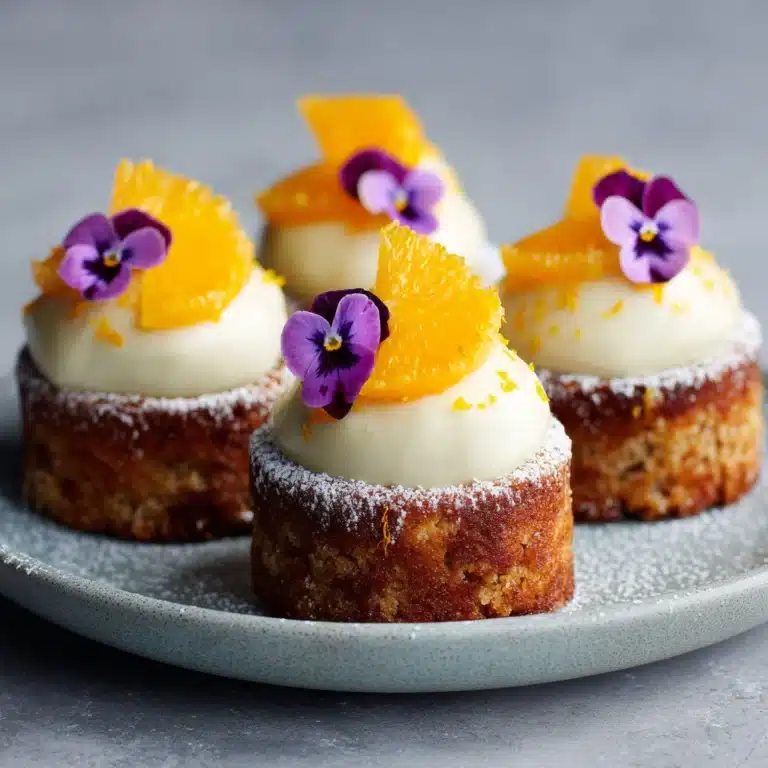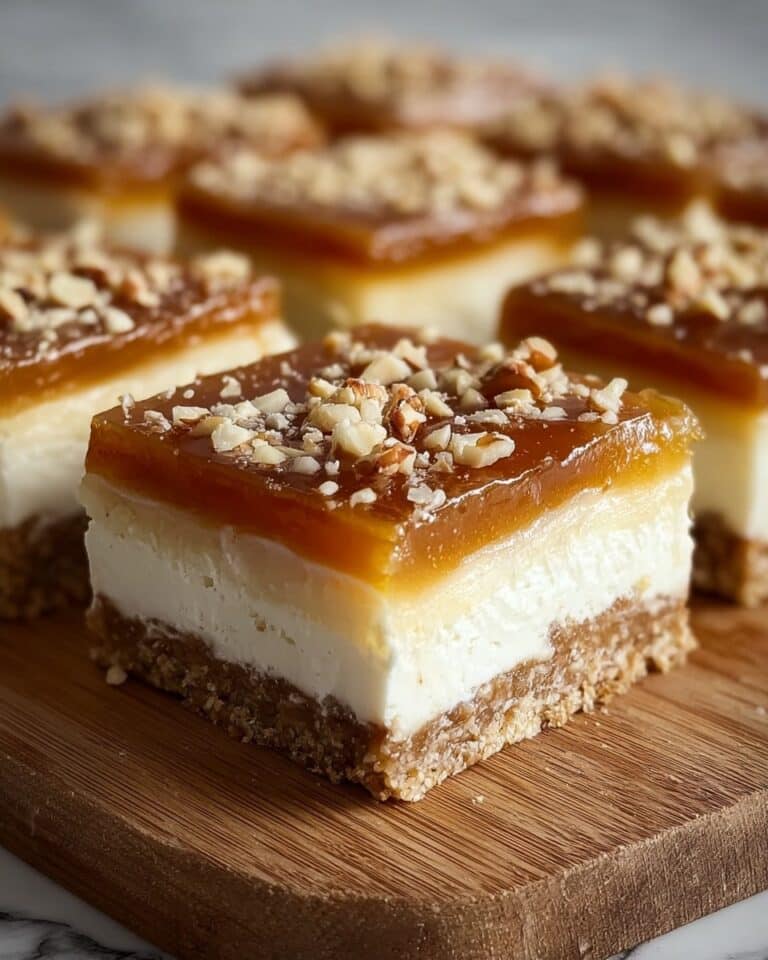If you’re searching for a flavorful, comforting dish that truly brings people together, Potato Curry is your answer. This easy recipe transforms humble pantry staples into a bowl bursting with color, spice, and creamy richness. The gentle heat of aromatic spices blends with coconut milk and tender potatoes, creating a vegan meal that is hearty yet vibrant. Whether you’re cooking for family or meal prepping for the week, Potato Curry is the sort of dish that turns an everyday dinner into a memorable moment.
Ingredients You’ll Need
Potato Curry comes together from a handful of ingredients, each one doing its part to build flavor and texture. Here’s what you need and why it matters:
- Vegetable oil: Forms the rich, aromatic base and helps bloom the spices.
- Onion (finely chopped): Provides a sweet, golden foundation and umami depth.
- Garlic (minced): Adds pungency and savory warmth to the sauce.
- Fresh ginger (grated): Lends fresh zest and a subtle heat for balance.
- Ground cumin: Brings earthiness and smokiness, a classic curry essential.
- Ground coriander: Offers bright, citrusy notes that lift the whole dish.
- Turmeric: Not only colors the curry a gorgeous golden hue, but adds gentle bitterness.
- Garam masala: A fragrant finishing spice blend that ties everything together.
- Chili powder: Controls the curry’s heat and gives a fiery kick (adjust to taste!).
- Potatoes (peeled & diced): The hearty star ingredient, soaking up all the spicy flavors.
- Tomatoes (chopped): Add a touch of tang and sweetness, balancing the richness.
- Vegetable broth or water: Helps simmer the potatoes and carries all those spices through each bite.
- Canned coconut milk: Creates a creamy, lush sauce and rounds out the spice.
- Salt: Essential for depth — taste as you go for perfect seasoning.
- Fresh cilantro (chopped, optional): Brings a pop of freshness when sprinkled on top!
How to Make Potato Curry
Step 1: Sauté the Aromatics
Start by heating the vegetable oil in a large skillet or pot over medium heat. Toss in the finely chopped onion, and cook until it turns soft and translucent — about five minutes. Once the onion is glowing, stir in your minced garlic and freshly grated ginger. The kitchen will suddenly smell incredible! Sauté for another minute until everything is just fragrant, making sure not to brown the garlic.
Step 2: Toast the Spices
Next, gather your cumin, coriander, turmeric, garam masala, and chili powder. Sprinkle them directly into the pan with your aromatics. Toast these spices for one minute, stirring constantly. This little step is magic — it unlocks the oils and deepens the flavor, laying the ultimate foundation for your Potato Curry.
Step 3: Add Potatoes and Tomatoes
Add the peeled, diced potatoes and chopped tomatoes to the skillet. Gently stir so every piece is coated in those beautiful spices. You want the potatoes to soak up all the flavors right from the start, and the tomatoes begin to melt into the sauce, adding their natural sweetness.
Step 4: Simmer with Broth
Pour in the vegetable broth or water, then give everything a stir and bring it all to a gentle boil. Once bubbling, reduce the heat, cover the pot, and let it simmer for about 15 minutes. The potatoes will become delightfully tender and start to absorb the surrounding curry.
Step 5: Finish with Coconut Milk
Remove the lid, stir in the creamy canned coconut milk, and leave the curry to simmer uncovered for 5 to 10 more minutes. This is when your Potato Curry thickens up and takes on a silky, luxurious texture. Taste and add salt as needed, then take it off the heat. If you like, sprinkle with fresh cilantro right before serving for a final hit of green and freshness.
How to Serve Potato Curry
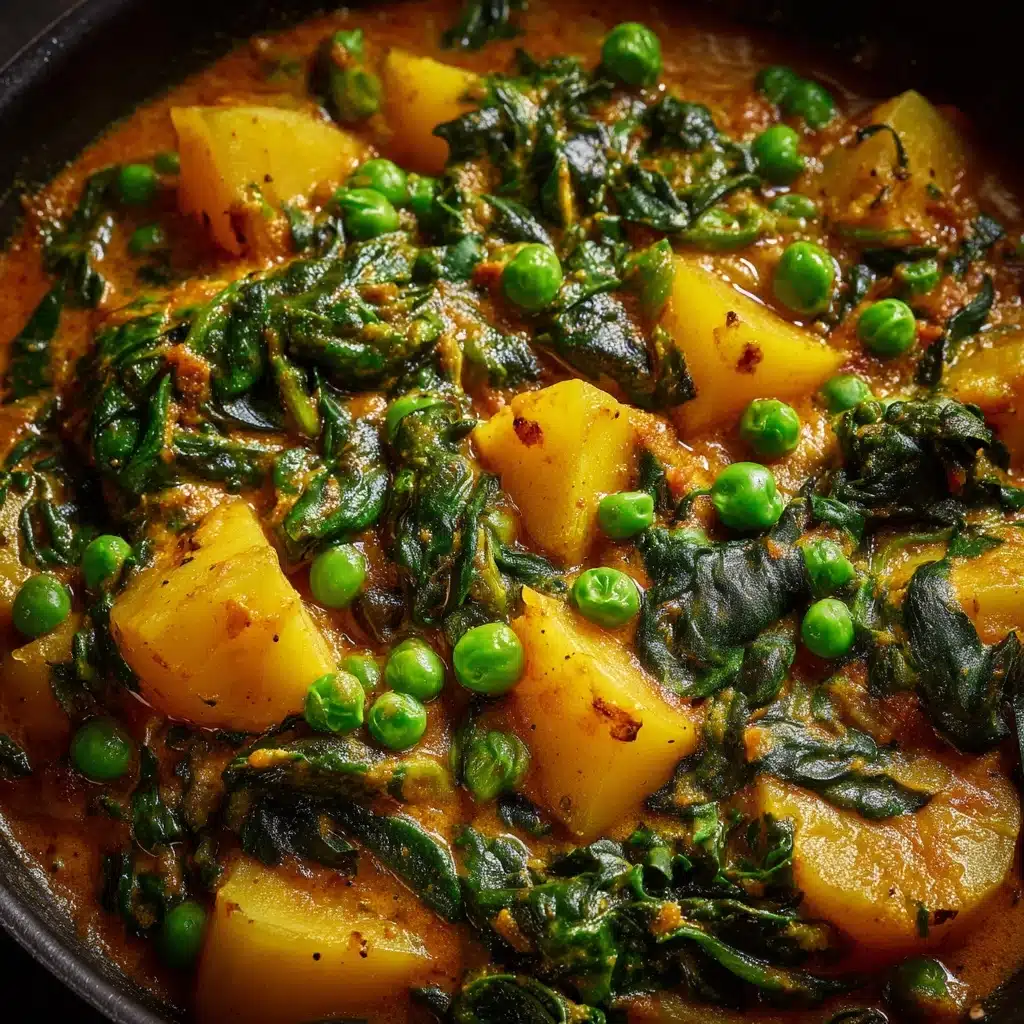
Garnishes
Before bringing your Potato Curry to the table, top it with a generous handful of chopped fresh cilantro. For an extra pop, try a sprinkle of sliced green chilies or a squeeze of lime. A dollop of dairy-free yogurt can also cool things down for anyone sensitive to spice.
Side Dishes
This curry goes hand-in-hand with fluffy basmati rice, making the perfect textural contrast to the sauce. If you prefer, scoop it up with soft naan, roti, or any flatbread you love. For a heartier meal, add a side of spiced chickpeas or a cooling cucumber salad.
Creative Ways to Present
Serve Potato Curry in individual bowls for a cozy dinner, or present it family-style in a big, colorful dish. Try ladling it over sweet potato mash for a twist, or spoon it into whole-wheat wraps for a fun lunch option. A finishing flourish of toasted coconut flakes adds crunch and flair too!
Make Ahead and Storage
Storing Leftovers
Leftover Potato Curry keeps beautifully in an airtight container in the refrigerator for up to four days. Let it cool fully before packing up to keep the potatoes from going mushy, and give it a gentle stir before serving again.
Freezing
If you want to save your curry for a rainy day, let it cool completely, then portion it into freezer-safe containers. Potato Curry freezes well for up to three months. Thaw in the refrigerator overnight for the best texture before reheating.
Reheating
To reheat, pour the curry into a saucepan over low to medium heat, stirring often until fully warmed through. If it’s looking a little dry, add a splash of water or coconut milk to loosen it up. A quick zap in the microwave (covered, in short bursts) works well, too.
FAQs
Can I use other vegetables in Potato Curry?
Absolutely! Mix in peas, carrots, cauliflower, or even chickpeas for extra protein and texture. This recipe is flexible and welcomes whatever you have on hand.
How spicy is this curry?
The heat comes mainly from the chili powder, so you can easily tailor it to your taste. For a milder Potato Curry, reduce or leave out the chili powder. If you love it hot, add an extra pinch!
Can I make this Potato Curry ahead of time?
Yes, in fact, the flavors deepen as it sits, making it perfect for meal prep. Make it a day in advance, refrigerate, then gently reheat when you’re ready to serve.
Is there a substitute for coconut milk?
If you’re not a fan of coconut, try unsweetened almond milk or a bit of cashew cream for a similar creaminess. You can also use more broth and finish with a splash of plant-based cream.
How do I keep the potatoes from turning mushy?
Keep an eye on the simmering time and test the potatoes with a fork for doneness. Resist the urge to over-stir, which can break them apart. Leaving the curry a little chunky gives it great texture.
Final Thoughts
There’s something truly special about sharing a homemade Potato Curry with friends or family. Each spoonful is packed with warming spices, creamy sauce, and hearty potatoes that just feel like a warm hug. Give this recipe a try — I promise it’ll become a new favorite in your kitchen, ready to brighten up the weeknight dinner table or impress at your next gathering!
Print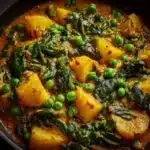
Potato Curry Recipe
- Prep Time: 10 minutes
- Cook Time: 25 minutes
- Total Time: 35 minutes
- Yield: 4 servings
- Category: Main Course
- Method: Stovetop
- Cuisine: Indian
- Diet: Vegan
Description
A flavorful and creamy Potato Curry recipe with a perfect blend of Indian spices. This vegan dish is hearty and satisfying, making it an excellent main course for any meal.
Ingredients
For the Potato Curry:
- 2 tablespoons vegetable oil
- 1 large onion (finely chopped)
- 3 cloves garlic (minced)
- 1-inch piece fresh ginger (grated)
- 2 teaspoons ground cumin
- 2 teaspoons ground coriander
- 1 teaspoon turmeric
- 1 teaspoon garam masala
- 1 teaspoon chili powder (adjust to taste)
- 4 medium potatoes (peeled and diced)
- 2 medium tomatoes (chopped)
- 1 cup vegetable broth or water
- 1 cup canned coconut milk
- 1 teaspoon salt (or to taste)
- 1/4 cup chopped fresh cilantro (optional for garnish)
Instructions
- Heat the oil and sauté aromatics: Heat oil in a skillet, sauté onion until translucent, then add garlic and ginger.
- Add spices and vegetables: Stir in cumin, coriander, turmeric, garam masala, chili powder, potatoes, and tomatoes.
- Cook the curry: Pour in broth, simmer until potatoes are tender, then add coconut milk and simmer until thickened.
- Season and serve: Season with salt, garnish with cilantro, and serve hot with rice or flatbread.
Notes
- You can add peas or chickpeas for extra protein and texture.
- Adjust the spice level to your taste by reducing or increasing the chili powder.

